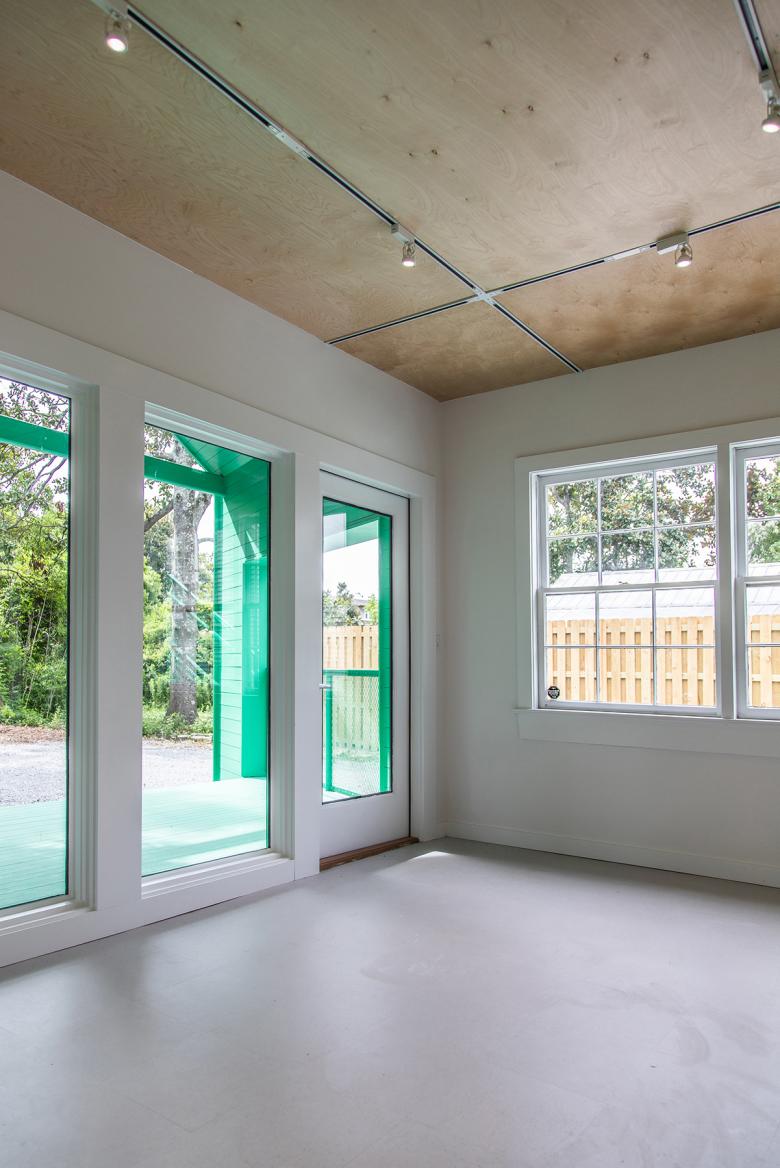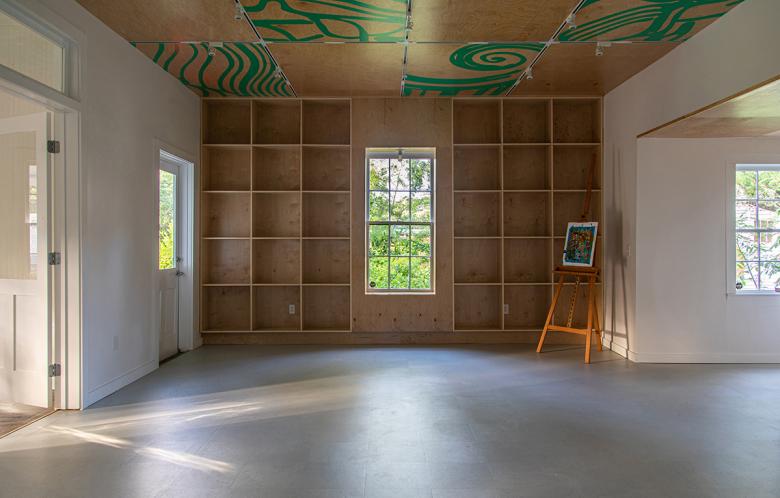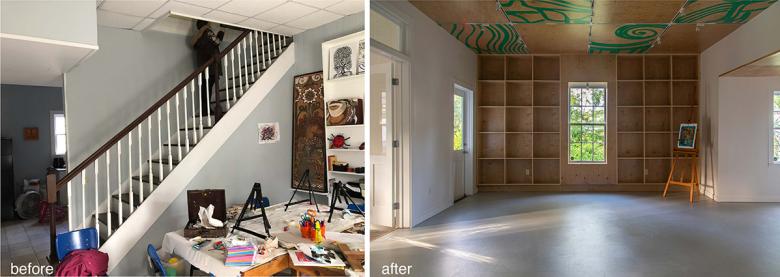US Building of the Week
Walter Anderson Museum of Art – Courtney Blossman Art Cottage
Tall Architects
13. December 2021
Photo: Paige Reaux Photography
Located on the Mississippi Gulf Coast, the Walter Anderson Museum of Art is dedicated to the preservation and celebration of artist-philosopher Walter Anderson (1903-1965). In May the museum opened the Courtney Blossman Art Cottage, the renovation of a 19th-century house and the first stage in a campus expansion. Tall Architects answered some questions about the adaptive-reuse project.
Location: Ocean Springs, Mississippi, USA
Client: Walter Anderson Museum of Art
Architect: Tall Architects
- Design Principals: Madison Talley, Mark Talley
- Project Team: Madison Talley, Mark Talley, Lilo Santos
Contractor: C.Roberds General Contractors
Fabricator (ceiling panels): HannaBerry Workshop
Building Area: 1737 sf (insulated), 290 sf (uninsulated)
Before and after
Please provide an overview of the project.The Walter Anderson Museum of Art asked us to design a renovation and restoration of a cottage that the museum uses for educational classes and which had been deemed “The Art Cottage.” The renovation of the cottage, an 1890s Queen Anne structure, is the first phase in the museum’s new campus expansion: the Creative Complex, which will consist of classroom space, event space, and studios.
Historic street elevation (Photo: Paige Reaux Photography)
What are the main ideas and inspirations influencing the design of the project?The museum’s request was to show a progression through time — past to present — from the historic street elevation, through the interior, to the new porch. With this in mind, the front gallery was restored to its original layout with beadboard walls and ceiling, tongue and groove floors, and two doors leading into the main studio. The main studio that follows is an open workspace that pays homage to Anderson’s block prints via graphics on the ceiling. This space is used for classes, meetings, and exhibitions. Towards the rear of the cottage, there is a smaller studio — formerly a storage room — with windows overlooking a porch that appears to be exploding into the landscape. The porch, and its amphitheater stairs, provide space for outdoor classes, lectures, and concerts. It sets the tone for the second phase of the campus expansion. The teal color used throughout was derived from Walter Anderson’s boat.
New porch (Photo: Paige Reaux Photography)
How did the project change between the initial design stage and its completion?Initially, the museum planned to remove the existing non-code-compliant interior stair, which previously divided the main studio space into two parts, and replace it with a modern monumental stair. Thankfully, the museum director asked if we could move the stair to the exterior, thereby opening up the middle of building to one large studio space and creating an opportunity to design an impactful exterior stair.
Exterior stair (Photo: Paige Reaux Photography)
Was the project influenced by any trends in energy-conservation, construction, or design?By removing the old and sometimes rotting materials and equipment and replacing them with historically respectful, efficient, and energy-saving materials and equipment, we were able to prolong the life of the building while lowering the environmental and economic impact.
Exterior stair (Photo: Paige Reaux Photography)
What products or materials have contributed to the success of the completed project?- Flooring: Forbo | Marmoleum MCT Tile
- Windows: Sierra Pacific
- Porch Decking: Aeratis | Aeratis Traditions
- Cladding: McNichols | Expanded Metal
Email interview conducted by John Hill.












